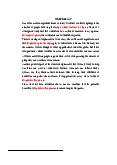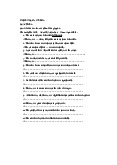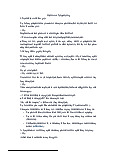Report tài liệu
Chia sẻ tài liệu
Suppose the Central Bank - English | Trường Đại Học Hạ Long
Suppose the Central Bank - English | Trường Đại Học Hạ Long được sưu tầm và soạn thảo dưới dạng file PDF để gửi tới các bạn sinh viên cùng tham khảo, ôn tập đầy đủ kiến thức, chuẩn bị cho các buổi học thật tốt. Mời bạn đọc đón xem!
Môn: English (ENGL1467) 54 tài liệu
Trường: Trường Đại Học Hạ Long 141 tài liệu
Tác giả:

Tài liệu khác của Trường Đại Học Hạ Long
Preview text:
1. Suppose the Central Bank decides to increase money supply by $2 million.
(a) How can it attain this target through open market operations if we
assume people hold no cash, the reserve requirement is 20% and there are no excess reserves?
(b) How can it attain this target through changing reserve requirement
if we assume people hold no cash, the monetary base is $10 million,
the current reserve requirement is 20%, and there are no excess reserves? a. We have:
MS= Monetary base x = Monetary base x = 2 million Monetary base= 0.4 million
The Central Bank can attain this target through open market operations if
people hold no cash by issuing bonds with the total value at 0.4 million b. We have:
MS= Monetary base x = 10 x = 50 million
Because the Central Bank wants to increase money supply by $2 millio
MS = 52 = Monetary base x = 10 x = Reserve ratio =
Reserve requirement = 19.23%
Tài liệu liên quan:
-

Write Essay - English | Trường Đại Học Hạ Long
253 127 -

Biology of Bitterness - English | Trường Đại Học Hạ Long
282 141 -

Homework advanced writing - English | Trường Đại Học Hạ Long
279 140 -

How to Write a Paragraph - English | Trường Đại Học Hạ Long
367 184 -

Paraphrasing exercise - English | Trường Đại Học Hạ Long
235 118